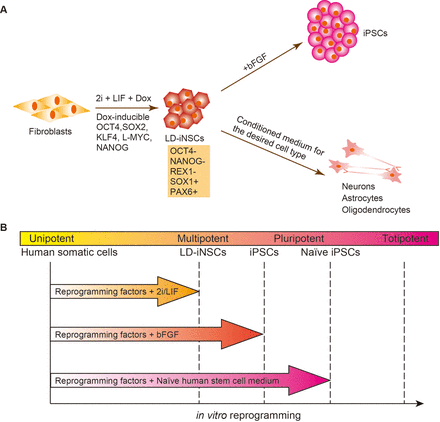Lyftogt Technique also known as Perineural Technique or Neural Prolotherapy (NPT) is one of the newest exciting advances in Regenerative Medicine used to treat neuropathic pain in a variety of musculoskeletal injuries and various pain conditions. Neural Prolotherapy is the injection of a medical-grade sugar (either dextrose or mannitol) just below the skin to promote healing of injured nerves and restoration of tissue function.
Neural Prolotherapy has also been shown to be effective with chronic pain after surgical procedures such as total knee replacements and Failed Back Surgery Syndrome. These patients often find relief when other traditional treatment options have failed.
 Generally there are 2 types of pain. 1) The pain we experience briefly like when a baby gets a shot & cries or when we quickly touch a hot stove. This pain can be intense but goes away. 2) The second type of pain is what brings patients into a doctor’s office: chronic pain. This is pain that lingers and is always there. It may vary in its features but is termed Neurogenic (or nerve) pain.
Generally there are 2 types of pain. 1) The pain we experience briefly like when a baby gets a shot & cries or when we quickly touch a hot stove. This pain can be intense but goes away. 2) The second type of pain is what brings patients into a doctor’s office: chronic pain. This is pain that lingers and is always there. It may vary in its features but is termed Neurogenic (or nerve) pain.
Nerve pain can present in a number of ways including, burning, knife like, stabbing, hot, tight, swollen, deep/dull, tingling, creepy crawling, wet sensation, and electric. The pain can be anywhere from head to toe overlying a tendon, bone, or joint etc.
Often times patients report pain & limitations that are out of proportion to the structural damage. We can’t see these nerves on MRI or X-ray but they are real & often cause pain. Just beneath the skin surface exist hundreds of nerves that we now believe play a major role in controlling pain & inflammation. Often patients point to a region & say “it hurts here!” We tell them nothing is in that region & it is referred, but now we target this pain directly. With our knowledge of anatomy & the patient’s explanation of where the pain is we can find these nerves and treat them.
Following trauma or repetitive overuse, there is a surge of sodium & calcium which causes these nerves to develop swelling & increased pressure & then “dump” chemicals (peptides called Substance P & CGRP via sensocrine nervous system) that promotes neurogenic inflammation. This causes swelling, pain, tendon damage (loss of type I collagen), & triggers an immune response that leads to cartilage damage/arthritis. This also causes exhaustion, depression & increased stress response in the brain (amygdala).
When tissue is injured, it causes a release of pro-inflammatory substances (e.g. Bradykinin, Prostaglandins) that activate a channel on nerves called the “Transient receptor potential V1” (TrpV1) cation channel, also known as the capsacin receptor. When this channel is turned on, it results in nerve release of substances that cause inflammation (substance P and calcitonin gene related peptide (CGRP)) leading to leaky blood vessels (swelling), hypersensitivity, and painful sensations.
It is postulated that dextrose and mannitol, the active ingredients of Neural Prolotherapy, bind to and inhibit the TrpV1 nerve receptors, preventing this cascade and restoring normal nerve function.
 Neural Prolotherapy and Traditional Prolotherapy share many similarities, but also some key differences. Both treatments promote healing and result in pain relief and functional restoration, but each uses different concentrations of dextrose as well as a different technique for injections.
Neural Prolotherapy and Traditional Prolotherapy share many similarities, but also some key differences. Both treatments promote healing and result in pain relief and functional restoration, but each uses different concentrations of dextrose as well as a different technique for injections.
Traditional Prolotherapy uses a higher concentration of dextrose and is injected deeper in the affected area to promote healing and repair of connective tissues such as ligaments and tendons. Neural Prolotherapy uses a much lower concentration of dextrose and is injected at multiple points just below the surface of the skin to target subcutaneous nerves to reduce neurogenic inflammation. Because it is injected just under the skin, Neural Prolotherapy is less invasive than traditional Prolotherapy.
Neural Prolotherapy solution contains either 5% Dextrose in sterile water (D5W) or 5% Mannitol in sterile water (M5W). Both Dextrose and Mannitol are sugars originally derived from a plant sources.
Neural Prolotherapy is generally very well tolerated, even without local anesthetic which is generally required for other types of injections. The injections are administered with very small and short needles just beneath the surface of the skin. Multiple injections are performed along the course of subcutaneous nerves. Some points may result in mild discomfort, and cold spray can be used to make the patient more comfortable.
Most patients notice an immediate reduction of pain immediately after the first injection. This initial analgesic effect may last anywhere between hours to days. Pain is generally reduced by 10-20% with each subsequent treatment as the tissue is progressively healed.
While each case is unique and treated on an individual basis, most patients respond to 5-8 treatments depending on how long the injury has been present as well as the degree of the damage. Treatments are typically spaced 1-2 weeks apart.
Neural Prolotherapy is considered safe when administered by a properly trained physician. In fact, the solution (D5W) is the same solution used in IV bags in emergency rooms and hospitals. Injections are done under sterile conditions with minimal risk of infection. While uncommon, possible adverse effects include local swelling, bruising and mild temporary pain.
Neural Prolotherapy is effective in treating nerve pain associated with injuries to joints, muscles, tendons, and ligaments. Fibromyalgia, headaches, migraines, treatment areas include the neck, back, knee, shoulder, hip, elbow, wrist, hand, foot, and ankle.
